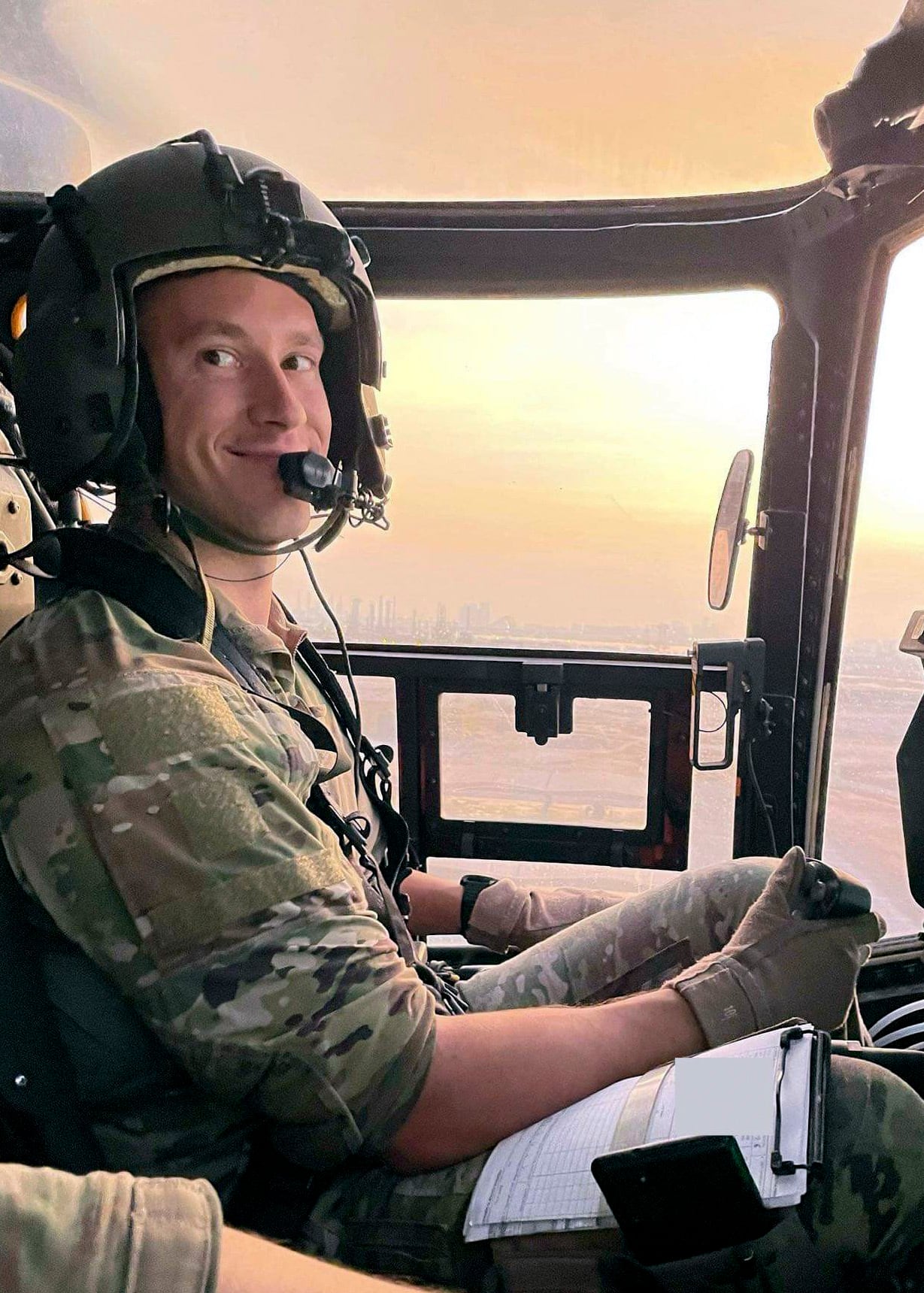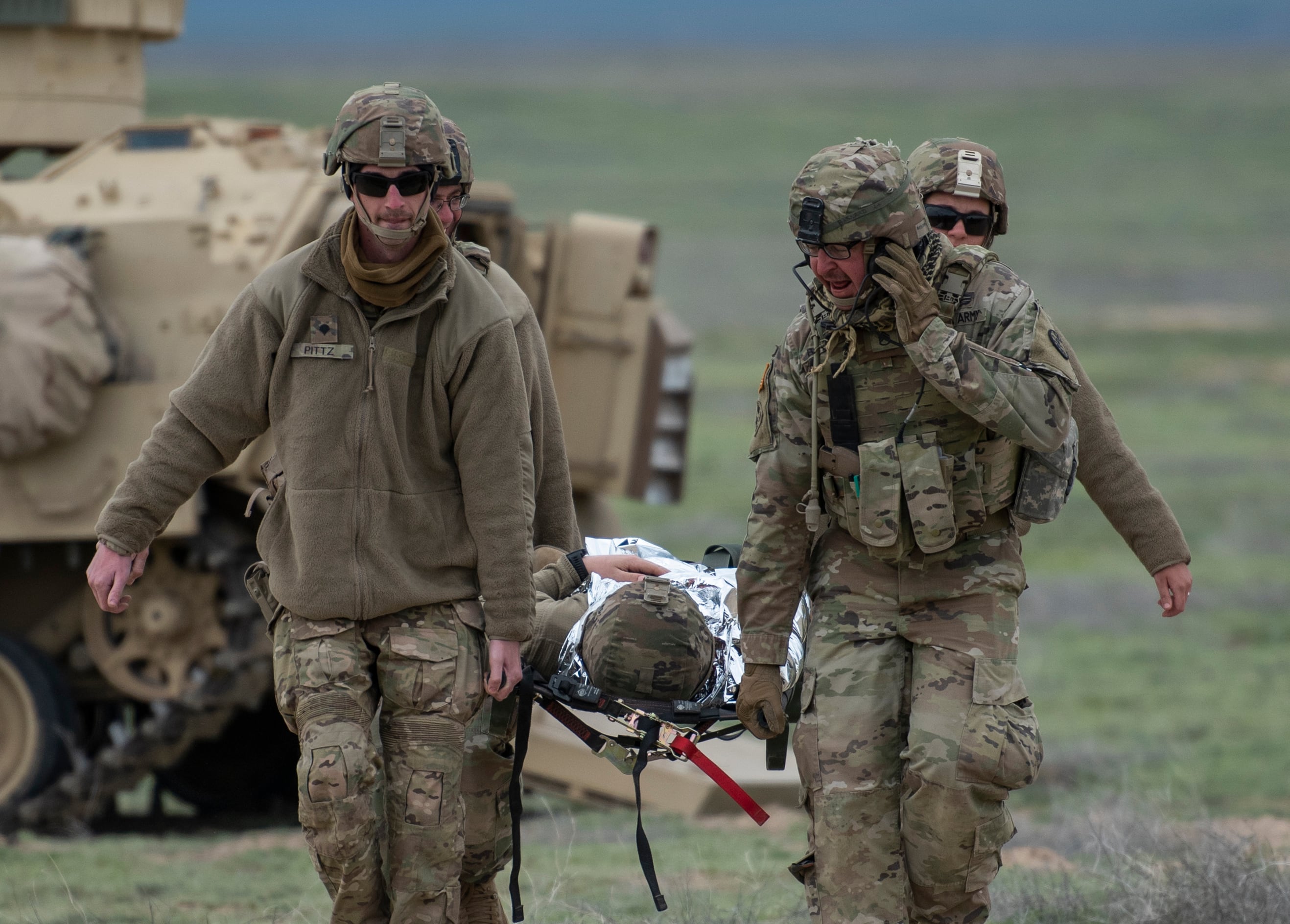The V-22 Osprey that crashed off the coast of Japan last November has brought the aircraft’s safety record back under scrutiny — but this time without one of its most vocal defenders.
Air Force Maj. Jeff Hoernemann had piloted the Osprey for more than a decade. Each time a new accident or incident occurred, you’d find him online, defending the warplane through his Reddit account, “UR_WRONG_ABOUT_V22.”

In November he and seven others were killed when their Air Force Special Operations Command CV-22B Osprey crashed off the coast of Japan.
The Japan crash has reverberated deeply within the Osprey community and left the grieving families with the need to maintain a delicate balance. They know the crews were passionate about the Osprey, because it is fast and performs like no other aircraft in the fleet. But the crashes keep happening, and none of them can stomach the idea of another family facing this kind of grief.
“Would Jeff want it grounded forever? No, he absolutely would not,” his mother, Cathy Hoernemann, said in an interview with The Associated Press. “But I can’t sit on my hands and wait for the next story of another crash, because I feel in my heart that if things continue like they are, it’s a matter of time, and it’s going to happen again, and then another family will be destroyed.”
On Wednesday, the House Oversight Committee’s national security subcommittee will hold a hearing on the Osprey’s safety record and whether the program has adequate Pentagon oversight. It’s the first of several reviews and congressional investigations prompted by the November crash.
The V-22 Osprey is first-generation tiltrotor technology for the U.S. military, which allows operators to fly long distances fast like an airplane, then tilt its massive rotors and engines to land on target like a helicopter. It’s been in design since the 1980s but only started military operations in 2007.
There are about 400 Ospreys across the Marine Corps, Navy and Air Force, at a cost of about $80 million each, and manufacturers Bell Flight and Boeing aren’t making more. A new generation tiltrotor aircraft is in the works by Bell that incorporates substantial design changes, including engines that do not rotate to a vertical position, which is an aspect of the Osprey that’s been a flashpoint in past accidents.
In the months since the Japan crash there’s been a sense that this accident produced a sea change in confidence in the Osprey. It also exposed an uneven divide among the services on the Osprey’s role in their fleets moving forward. After a monthslong grounding following the November accident, the Marine Corps moved aggressively to get its Ospreys back in the air. The Air Force has taken a slower, more cautious approach — and its leadership is already talking publicly about looking for a different aircraft to carry out its special operations mission in the future. The Navy said its Ospreys also have not returned to their mission of flying passengers to aircraft carriers, and at a May Senate appropriations hearing a senior Navy acquisition official said each variant still has flight restrictions.
The Marine Corps, which bought hundreds of Ospreys to replace the CH-46 helicopter, plans on keeping the aircraft in its fleet until at least 2050. Families who spoke to the AP said that if the Osprey is going to keep flying they want Bell Flight, Boeing and the Pentagon’s V-22 joint program office to make the design changes necessary to make the aircraft safe.
They’ve tried through lawsuits and media attention, and through the late and outspoken North Carolina Republican Rep. Walter Jones, who over two decades of hearings and investigations and until his death in 2019, would not let attention on the program’s challenges fade.
Despite intermittent fixes, V-22 components wear out faster than anticipated or fail in unexpected ways, causing flight risks. Instead of committing to a design overhaul, the answer to date has been to train Osprey pilots to fly around the problems.
“I believe that continuing to fly under the circumstances is a big risk, but of necessity as the services are completely dependent on the V-22,” said Rex Rivolo, a former Osprey program evaluator who has raised safety concerns about the aircraft for the past two decades.
Trish Brow’s husband, Lt. Col. John Brow, was killed in one of the Osprey’s earliest major accidents, an April 2000 crash in Marana, Arizona, that killed 19 Marines.
In the blurred months afterward, a fellow Osprey pilot, Lt. Col. Keith Sweaney, reached out to her.
“He told me that they were making changes as far as rate of descent, that it was going to be safer for them moving forward,” Brow said.
Sweaney died not long afterward, in a North Carolina Osprey crash in December 2000 that killed him and three other Marines.
“When he crashed, that was shocking,” Brow said.
After the Marana crash, Brow and Connie Gruber, whose husband, Marine Corps Maj. Brooks Gruber, died in the same accident, settled one of the first Osprey family lawsuits with Bell and Boeing for an undisclosed amount.
Since then there have been 10 more fatal Osprey accidents and other crashes where the aircraft was destroyed but all on board lived.
“It’s a gut punch every time one of those happens. Why? Just because you’re like, ‘Oh God, here it comes again,’” Brow said. “You just want to shake your head and say, ‘Can’t you guys get it right?’ "
Last month, four more families filed a new lawsuit against Bell, Boeing and the Osprey’s engine manufacturer, Rolls Royce. The lawsuit stems from a 2022 crash in Glamis, California, that killed five Marines and accuses the manufacturers of failing to meet safety standards and address known parts failures that contributed to the accident.
When an Osprey crash would occur, Amber Sax would turn to her husband, Osprey pilot and Marine Corps Capt. John Sax, for an understanding of what happened and reassurance from him about its safety.
She worried privately about the risks. But she knew her husband loved flying the Osprey so much he’d turned down a slot to fly Marine Corps fighter jets to get the MV-22 instead.
When news of the Glamis accident spread, Amber was at home pregnant with their second child.
“I never, ever once had a conversation with John of ‘I don’t want you flying these, I don’t want you doing this anymore. Let’s get out. What are our options?’ I never once said that to him,” Sax said. “But when I was waiting for the knock on the door, and I didn’t know whether it was him or not, all I kept thinking was, as soon as he gets home, I’m telling him, I don’t think I can do it. You’re going to have to walk me through this. Are you going to keep flying this aircraft?”
Sax was one of the five Marines killed, and his wife is among those now suing.
Both Boeing and Bell declined to comment, citing the ongoing litigation.
Cathy Hoernemann learned about her son’s Reddit account at his funeral, when fellow Osprey pilots shared stories about how much they’d loved him. She has submitted a statement to the subcommittee about her concerns with the Osprey.
Every fatal crash has occurred because something went wrong during flight, not due to enemy fire, which has hit hard, she said.
“I decided that if I’m going to honor my son and not let this go down as just another really bad accident, that I cannot look these young men and women in the eye and wait for another mishap,” Hoernemann said.
“These men and women get in these planes on a daily basis, trusting, just like Jeff did, you’re going to go home, that it’s going to work like it should. It should be safe,” she said, her voice halting. “It should be safe.”
Tara Copp is a Pentagon correspondent for the Associated Press. She was previously Pentagon bureau chief for Sightline Media Group.





